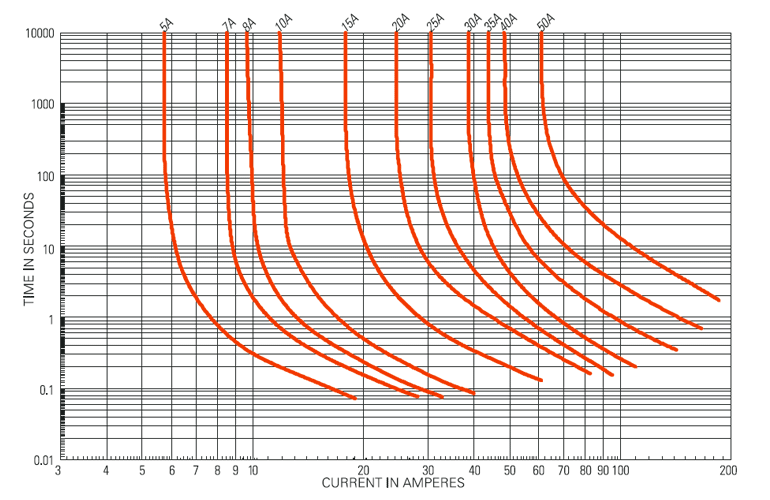
Glass To Blade Fuses
#16

Posted 05 May 2012 - 08:48 AM
#17

Posted 05 May 2012 - 08:58 AM
http://www.theminifo...rt#entry1706469
interesting read, and also i have some 7.5 amp fuses, need to get my head around this, thanks bud
Edited by firefox, 05 May 2012 - 09:02 AM.
#18

Posted 05 May 2012 - 09:22 AM
Hypothetically
#19

Posted 05 May 2012 - 09:41 AM
Edited by Dan, 05 May 2012 - 09:46 AM.
#20

Posted 05 May 2012 - 09:57 AM
might make more sence to you, and might be helpfull to others, dont know if it is product related
or generic
#21

Posted 18 October 2014 - 06:27 AM
I would like to convert mine to one box under the bonnet as I have quite a few inline fuses over the years.
Edited by Abs, 18 October 2014 - 06:28 AM.
#22

Posted 18 October 2014 - 09:32 AM
#23

Posted 18 October 2014 - 01:16 PM
There are online tables that spell out the differences and conversions. I am providing a link to one such table below.
You will probably find most fuse conversion tables on U.S. sites because when we (over here) see glass fuses in the parts store, they are of the Bussman (AGC) type which are rated like the modern blade (ATC) type, NOT rated the same as the Lucas glass fuses. It was very common in the 1960s and 1970s for people to install a Bussman fuse in place of a Lucas fuse of the same numeric value only to see their wiring melt.
In the absence of a table, use the conversion factor of...
Lucas Glass Fuse Rating x .6 = ATC (Blade) Fuse Rating... then go to the next smaller value.
For example Lucas 35 Amp x .6 = 21 Amps. There is no 21 Amp fuse so use a 20 Amp ATC fuse. See the page linked below for more info.
http://www.drooartz....dex.php?page=29
The "Randall table" on the page reflects what most of us in the U.S. have followed for years. You will notice that the .6 multiplier I mentioned works with Randall's table except for the 50 Amp fuse.
Edited by dklawson, 18 October 2014 - 01:17 PM.
#24

Posted 19 July 2016 - 02:01 PM
Good stuff
still like one poster said a list of glass fuse ratings and the converted blade fuse rating would be nice
Just putting in a decent blade fuse box without changing all the wiring keeps things tidy
and makes checking and changing a blown fuse a little easier
or as another poster said keeping the plastic fuse holders up to condition and swapping in new ones when the old ones get too worn out
personally a couple of decent blade fuse boxes would be tidy - that will be one of my projects if my car ever gets to run
I will then post what I did.
thanks for the 0.6 conversion factor a big help
#25

Posted 19 July 2016 - 03:08 PM
#26

Posted 19 July 2016 - 07:27 PM
You could just measure the current bring drawn by a circuit using an ammeter available from somewhere like maplins then fit the appropiate size fuse egif the circuit is drawing 13 amps the fit a 15amp fuse etc.
http://www.maplin.co...axi-blade-n48cy
#27

Posted 19 July 2016 - 08:58 PM
A couple of things I'll say here to no doubt add to the confusion!
Fuses are not over-load 'devices' but there for short circuits. Not to say they won't work for over-loads, but not very good at doing that.
Fuses (and most Circuit Breakers) have a Time / Current Characteristic. The more Current Drawn through them, over their rating, the less Time before they blow. There's published curves for this eg;-
Which to most people tinkering around with auto electric, is probably as useful as pockets in a singlet! But it can also show why you can sometimes get away with a smaller fuse. It could also be that the bigger fuse fitted is simply over-rated, which is most likely. Remember, they are Short Circuit devices.
Eg, the 5 Amp Fuse in those curves, can be run at 5.75 Amps (over-load yeah?) however, it will take almost 3 hours to blow. When a short circuit occurs, many hundreds of amps will flow through that short and coming back to the same fuse, under these conditions, it will blow in less than 0.1 seconds (more likely 0.001 seconds in fact).
When doing these conversions, I use the commonly available 6 Blade Fuse Holders that have a clip on cover. I know CBS for one supplier has these and others. Well worth a look.
I also have the same Ammeter that minimat has linked up ^ and found it very helpful BUT don't try to use it for fault finding, they are only rated to 20 Amps. They are for measuring health circuits of less than 20 Amps. They do have a fuse, but it's still easily possible to damage them especially on shorted circuits.
Edited by Moke Spider, 19 July 2016 - 09:02 PM.
1 user(s) are reading this topic
0 members, 1 guests, 0 anonymous users



















